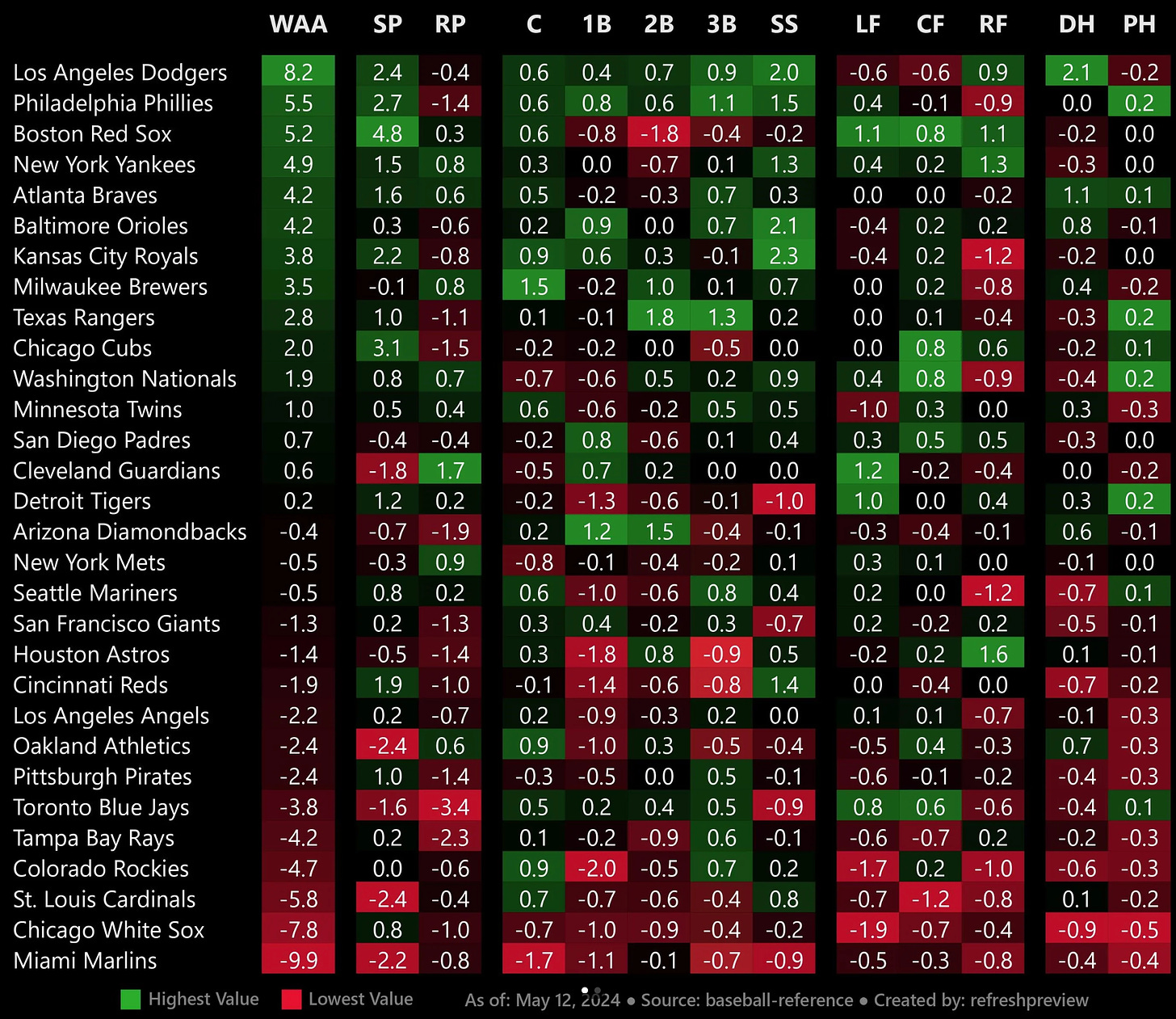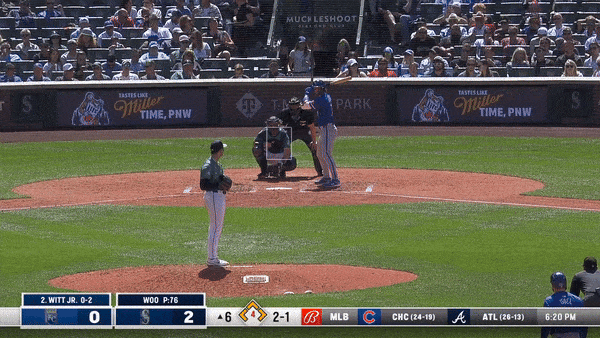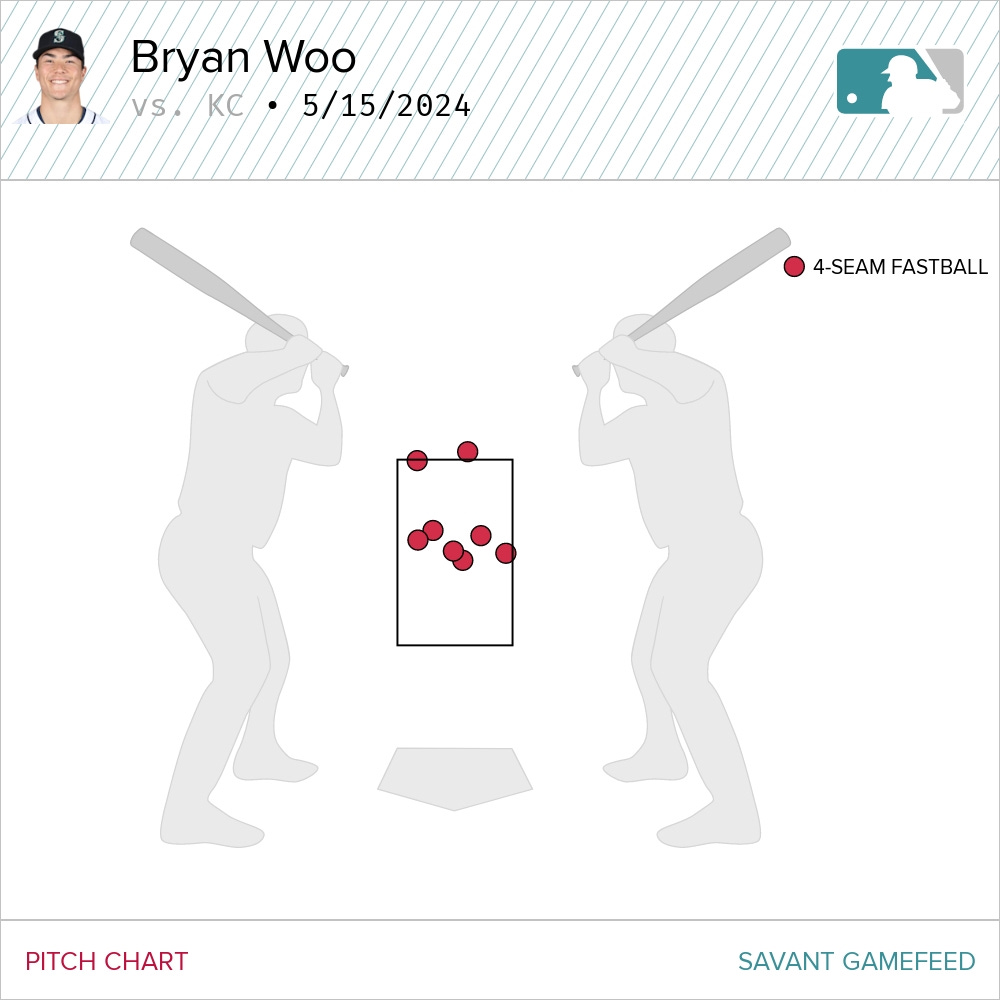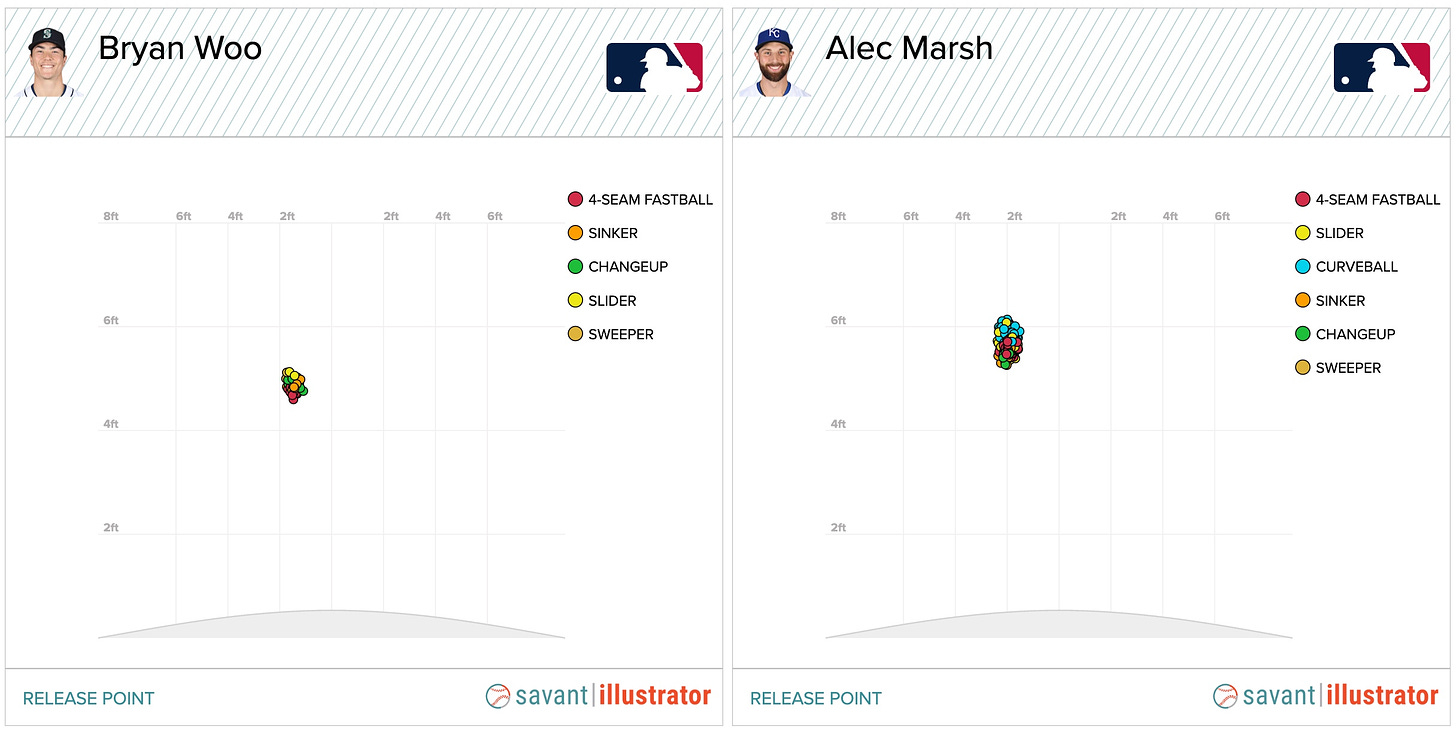It's time for the Royals to start acting like a contender
The Royals accelerated their rebuild this offseason and have had early success. Now they need to consolidate those gains into something that can carry them through the rest of the season.
With just a little over a quarter of the 2024 season having been played, the Royals find themselves with a 26-19 record, just a game and a half out of first place in what has been a surprisingly competitive AL Central division.
With a team OPS+ of 95, their offense has been just kind of meh. Remember, OPS+ is pinned to 100. Anything above 100 is above average, while anything under 100 is below average. The Royals’ team offense is five percent worse than the league-average offense. That’s despite scoring 4.5 runs per game, which is better than the league average of 4.3 runs per game. Watching the Royals this year, we’ve come to realize they have something of an “all or nothing” tilt when it comes to production. They’ve scored two or fewer runs in over 30 percent of their games played thus far. Yet they’ve plated double-digits on six occasions.
What’s kept them in most games and driven them to their current record has been the pitching and the defense. On the mound, Royals’ pitchers are allowing just 3.5 runs per game, the third-best rate in the majors, trailing only the Yankees and the Dodgers. Rarified big market air, that.
Yankees - 3.39 R/G
Dodgers - 3.47 R/G
Royals - 3.49 R/G
Defensively, you could make the case that the Royals are the best in the league. They’re certainly elite, especially up the middle at second base and shortstop. According to The Fielding Bible, the Royals are the tops in the majors when it comes to Defensive Runs Saved.
Royals - 36 DRS
Dodgers - 33 DRS
Blue Jays - 29 DRS
It’s been just about eight months since the Royals crashed to 106 losses. The pitching and defense were both abysmal in 2023, making this turnaround just a little extra amazing.
For all the positives, trouble is bubbling under the surface. The heavy lifting for the offense has come from the top four positions in the lineup. The lower half of the order has become something of an abyss. A place where potential rallies go to die.
I grabbed this from Reddit the other day. The stats are only through last Sunday, but it’s still relevant. And sobering.
No team, not even the megawatt Dodgers, will have green or even a positive bWAR at every single position. But for the teams that have a bWAR north of three at this point, there are only two positions that stand out as glaring issues. The Red Sox at second base and the Royals in right field.
Of course, the majority of reps in right field have gone to Hunter Renfroe. Rather than point the finger at one player in particular though, I’m going to go with a more shotgun approach and take issue with the Royals’ entire outfield and their overall lack of offensive production. Left field, the regular domain of MJ Melendez, has come up with a negative bWAR through the first quarter of the season. You know that 0.2 bWAR in center field is the result of the defense of Kyle Isbel. We can expand the net to include designated hitter, which is also in negative bWAR territory. That would be Nelson Velázquez.
Collectively, Royals outfielders are hitting .199/.257/.316. No team’s outfield is batting less than .203. The Royals’ slugging percentage among outfielders isn’t the worst (whew). It’s the second-worst, ahead of only the Woeful White Sox. And their collective on-base percentage? It’s the worst in the game and it’s not even close. The Royals outfield OBP is 17 points worse than the next team which somehow happens to be…the Dodgers?
Add the numbers altogether and you have the worst outfield in the majors in 2024. Here are the bottom five outfields ranked by OPS+:
Pirates - 80
Diamondbacks - 79
Cardinals - 74
White Sox - 72
Royals - 66
The Royals outfielders are 34 percent worse, production-wise offensively, when compared to the average major league outfield.
This is a problem. It’s not going to go away on its own. If the Royals are serious about contending in the AL Central and positioning themselves for a Wild Card run, no matter how unlikely that was at the start of the season, they need to get serious about addressing the problems in their lineup.
It’s time for JJ Picollo to start making moves.
The first move that should happen is also the easiest. Drew Waters needs to be up in Kansas City. Waters is hitting .299/.381/.513 for the Storm Chasers and has been all over Twitter in the last several days with offensive highlights galore, including a home run he crushed over 450 feet. Oh, those numbers do not include the night he had for Omaha on Thursday where he went 4-6 with a double and a triple while driving in four runs. He just tied the game with two outs in the ninth and then drove in the go-ahead run in the 11th. The dude is locked in at Triple-A.
He’s already on the 40-man roster, so that part is taken care of. I’d call him up and send MJ Melendez down. In Melendez’s last 92 plate appearances covering a month-plus of action, he’s hitting just .111/.130/.200 with 29 strikeouts. He’s absolutely lost at the plate. Sure, his defense in left has improved, so credit to him for that, but the statline I just referenced in no way carries his glove.
Waters has been in the majors in parts of the last two seasons, impressing with the bat in 2022, but falling short of carrying that through in 2023. Overall, he’s played in 130 games, accumulating 446 plate appearances while hitting .231/.306/.402. That’s good for a 95 OPS+. Not great. But better than the production the Royals have gotten from Melendez over his career. Melendez is a .221/.305/.390 hitter with a career 92 OPS+ in almost three times the at bats. Waters, from what we’ve seen in his brief big league career, probably isn’t the answer, but he’d most likely give you better production. Not that the bar is especially high.
I’m not saying the Royals should give up on Melendez. But it’s clear he’s in a horrific funk. If the Royals were playing for fourth place in the Central, he could try to work out of it in the majors. But the Royals aren’t playing for fourth, and Melendez needs to head to Omaha to get any kind of offensive mojo back.
For the next move, the Royals should place Devin Mann on the 40-man roster and bring him to Kansas City. Mann came to the Royals in last year’s Ryan Yarbrough trade with the Dodgers and is hitting .314/.413/.500 in 102 at bats for the Storm Chasers.
When he was in the Dodgers organization, Mann was routinely among their top 30 prospects. Baseball America ranked him as the Dodgers’ 21st-best prospect ahead of the 2023 season, writing this:
Mann is a well-rounded player who does a little bit of everything. He is a persistent on-base threat with strong strike-zone discipline and good pitch recognition and has the contact skills and power to do damage when he gets a pitch to hit. Mann generates average raw power with a short, controlled swing and drives balls from gap-to-gap.
I’m not sure what the Royals have here, but what the hell…Picollo struck gold with a couple other trades last year. Why not go for a third winner? The Royals have been operating under the premise that a player has to succeed to keep—or earn—a position. A move of this sort would certainly be an acknowledgement of the start Mann has gotten off to in Triple-A. He’s 27-years-old and has punished pitchers in the International League. He deserves a turn in the majors.
To get Mann to Kansas City it will take two corresponding moves. First, to get him on the 40-man roster I’d probably sacrifice catcher Austin Nola. Then I’d send Nelson Velázquez to Omaha.
Velázquez’s batted ball profile is raising all sorts of red flags—despite hitting the go-ahead home run in the middle game of the series in Seattle this week. He’s hitting 47 percent of the balls he puts into play on the ground. That’s an absurd rate for someone with his kind of power potential. His flyball rate which was 42 percent last year according to Statcast is down to 28 percent this year. He’s basically swapped his ground ball rate for his flyball rate. That’s impressive but not in a good way. These rates normalize in roughly 80 batted ball events. Velázquez has put 75 balls in play this year, so we’re almost there. This may not be a blip. He’s going to need a major swing and approach overhaul to correct this issue.
HIs Statcast numbers are equally concerning. Velázquez’s Hard Hit Rate is down from 49 percent last year to it’s current 36 percent. He’s lost about four MPH off his average exit velocity from last season. His Barrel Rate has nosedived from 21 percent in 2023 to just five percent this season. Combine these metrics and his expected slugging percentage is just .449. About 100 points better from here he currently sits, but still not good enough.
Mann is an unknown major league commodity at this point. As we’ve learned (and heard) from various players, managers and executives, the gulf between Triple-A and the majors is massive these days. As we know from watching these Royals the last several years, minor league success is difficult to translate to the big leagues. Mann has had some success in the minors and deserves a call, but we really don’t know what to expect from him until he gets settled in—if that even happens. Yet that’s a risk I would be willing to take because the alternative—staying the course—isn’t a winning one.
Bringing up Waters and Mann allows Matt Quatraro to continue to rotate his outfielders. Dairon Blanco can continue his role as a pinch runner/late inning defensive replacement/spot starter. Kyle Isbel gets a stay, despite his current production where he’s hitting just .212/.252/.336 with a 66 OPS+ because as we could see from the bWAR chart above, the defense brings plenty of value.
And then Renfroe is still in the mix as well. Yes, I can hear your displeasure from here.
Of all the subpar production from the Royals outfield, Renfroe has performed the worst. Through 128 PAs he’s hitting .154/.227/.256 with an OPS+ of 38. Ick. And then his defense hasn’t been that great out in right field, either. Yeah, the arm still plays but the range has been really disappointing, at least to my personal eye test. He’s not bad out there necessarily, he’s just kind of average overall. There’s nothing wrong with that…unless your OPS+ is 38.
But the Royals signed Renfroe to a free agent contract last winter that will pay him $5.5 million. There’s a player option for $7.5 million and various escalators built into the deal which will kick in around 400 plate appearances. It’s not about the money. They released Hunter Dozier around this time last year and they’re currently paying him close to $9 million to play for the Salt Lake Bees in Triple-A for the Angels. It’s more about timing. The Royals can’t bring a guy in on a free agent deal like that, with the expectation that he’s an everyday guy, and then walk away with a quarter of the season played. It’s poor optics. Even if everyone can see the issue.
Instead, the Royals need to work to see if they can get any production at all out of Renfroe, but he’s going to need to do it in a part time/bench role going forward. I’d give it another two months, but in that limited role. With Quatraro filling out the lineup card, he’ll still get his opportunity. It just won’t be as prominent. And unproductive.
There are other moves to consider as the season unfolds. Walter Pennington has punched out 39 batters in 27.1 innings in Omaha and is a guy who can bring some nasty swing and miss to the bullpen. I’m less enthusiastic about Nick Pratto, who owns a 745 OPS in Omaha, and Nate Eaton, who currently is at .922. There’s also obviously the trade market that Picollo and his scouts and analysts will most certainly explore. That is something that intrigues me, given the successes they’ve found doing those kind of deals.
I routinely get emails from some sportsbook in Vegas. When the season opened, they had their over/under win total set at 71.5. This week they sent out a new email with a new over/under win total: 81.5. These Royals have made plenty of people believers. Now, finding themselves in a position of contention, need to start acting like they can pull this off. That means minimizing the time of unproductive players in the search of someone…anyone…who can be an upgrade at a position of need.
I wasn’t able to write about Wednesday’s loss, but there were a couple of things from the game that I’d like to revisit.
First, Mariners starter Bryan Woo was impressive as hell. He allowed just one baserunner in the first five innings—a bunt base hit from Michael Massey leading off the second inning. Something that Jeremy Guthrie mentioned on the broadcast was Woo’s release point being much lower and that was causing his pitches—his four-seamer in particular—to have the illusion of the baseball rising. We saw a bunch of hitters missing pitching in the zone by swinging under them.
Apologies in advance for using Bobby Witt Jr. as the example.
Witt was ahead in the count and, with the bases loaded, could hunt fastball. He was on it, velocity-wise. But the bat bath went underneath the pitch. Woo is filthy.
These were the swings and misses Woo recorded on his four-seamer.
I found myself wanting to compare Woo’s release point to another pitcher. As luck would have it, Alec Marsh was throwing on Wednesday. Both are right-handers and both stand six-foot, two-inches. From Baseball Savant, here is how their release points compare:
Anyway, some great analysis from Guthrie early in the game to alert the viewer what to look for when the Royals were squaring off against Woo. It’s what you want to hear from the broadcast, perfectly timed and incredibly relevant. The Royals were helpless against his four-seamer and the unusual release point certainly had something to do with that.
Central Issues
Yankees 5, Twins 0
Death, taxes and the Yankees laying waste to the Twins. Anthony Volpe led off the game with a home run and it was over. Sure, the Yankees tacked on two more in the first for good measure on a Gleyber Torres double and an Anthony Rizzo sac fly, but did they really need it? Hell, they added another run in the sixth and then one more in the seventh. What fun. The Twins scored one run in their three games against the Yankees.
















I'm on board with sending MJ and Nelly down for some intensive coaching and I agree with bringing up Waters and Mann. That said, I wouldn't make either move if I didn't plan on them playing every day. At 27, it feels like Mann either comes up this year or should be traded - he's not likely to get much better than he is now unless he gets a shot in the majors.
The clock is definitely ticking on Renfroe and Frazier and, to a lesser extent, Hampson. None of them has earned his roster spot, much less his salary.
I'm curious why you're less interested in Nate Eaton. Are you assuming he's a AAAA guy - solved AAA pitching but will never get to a MLB level? I'd open to using him in a bench role replacing one of the vets.
I don't know much about Devin Mann but I love his last name.